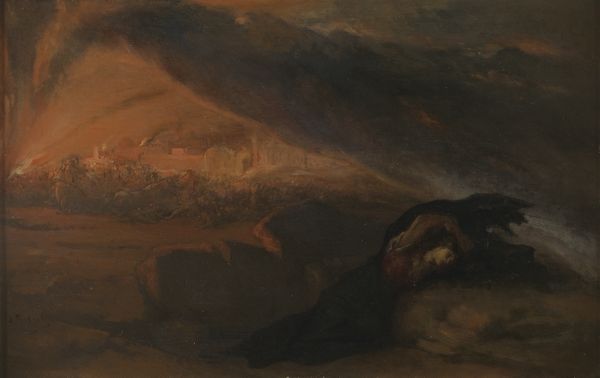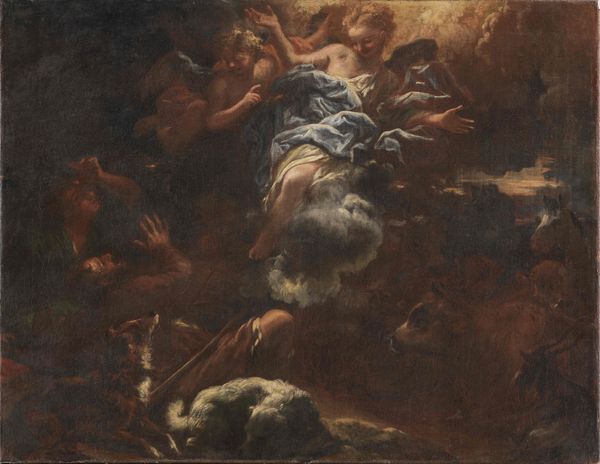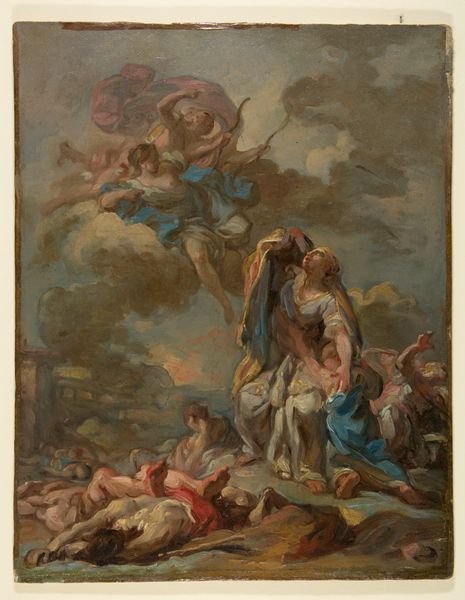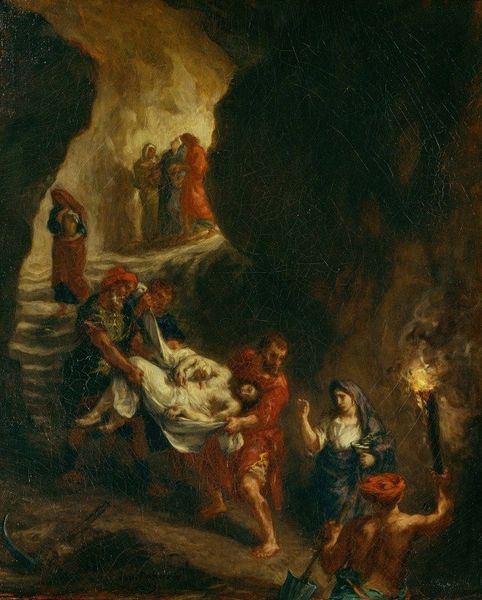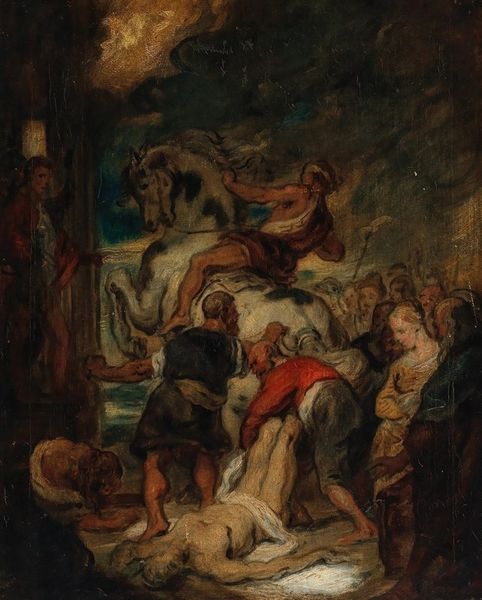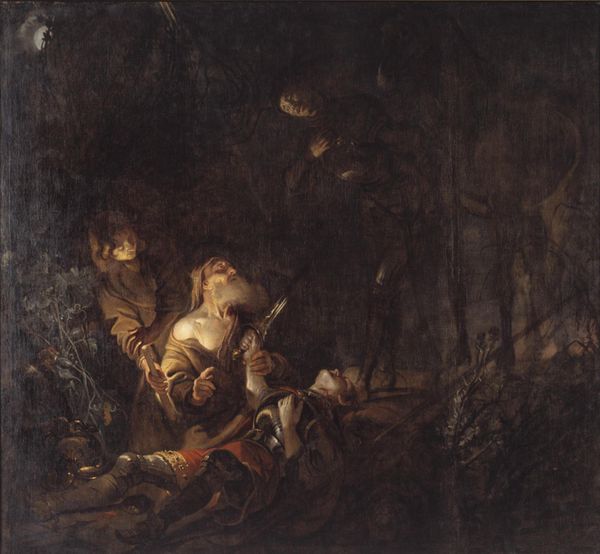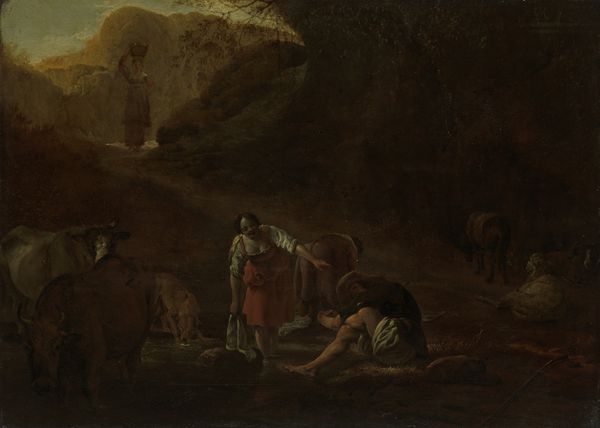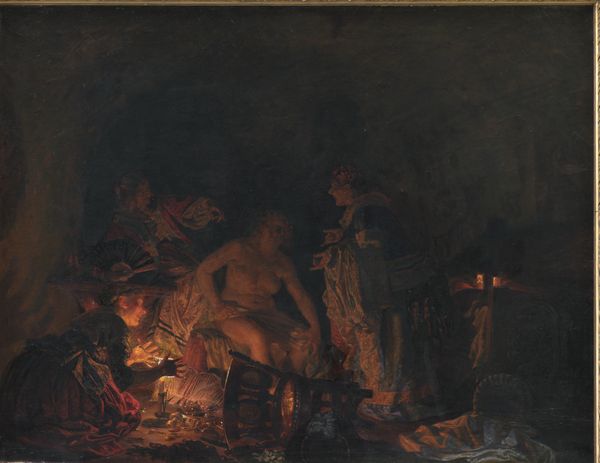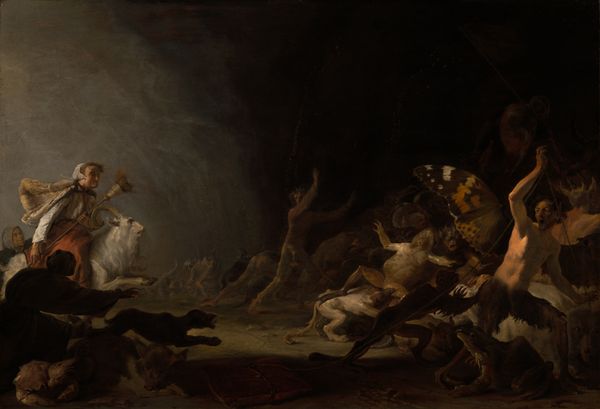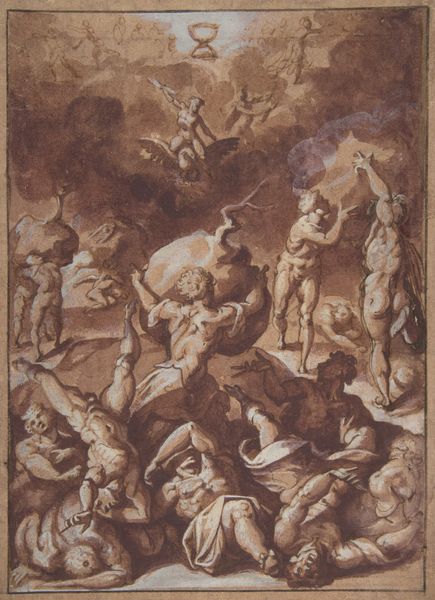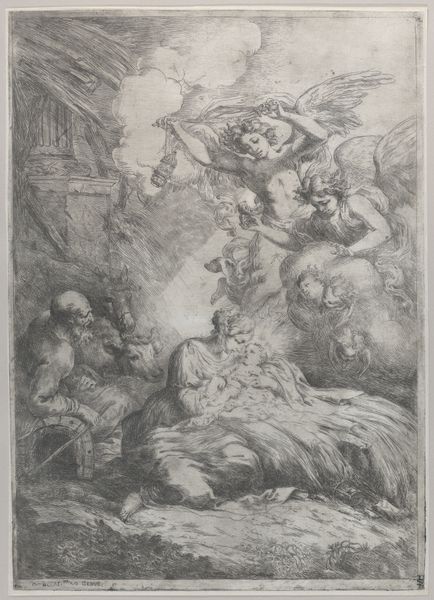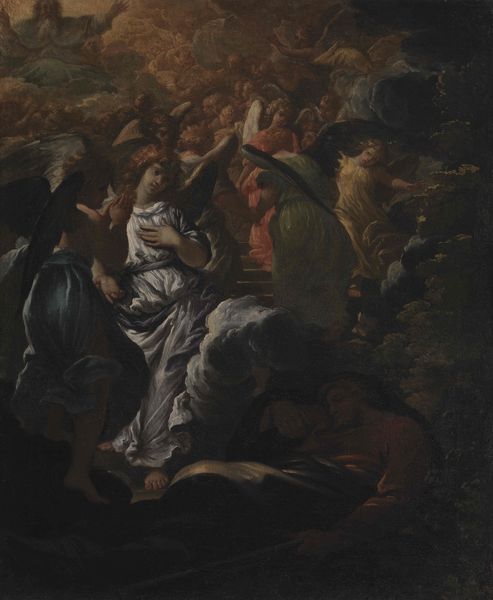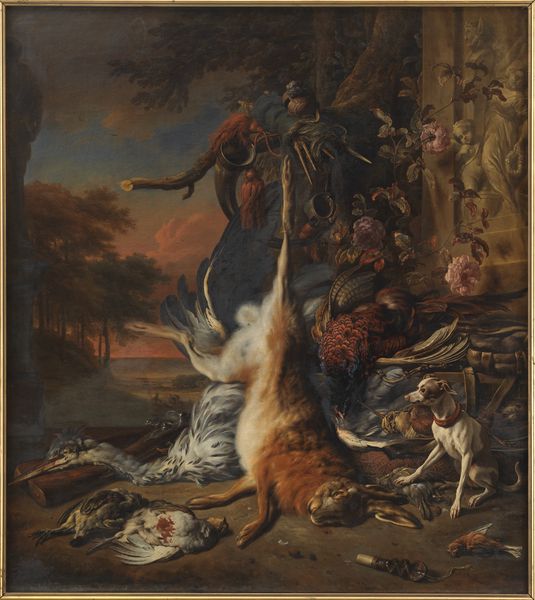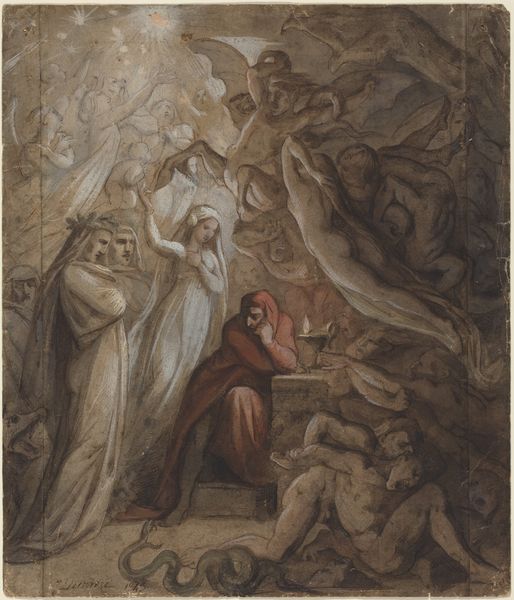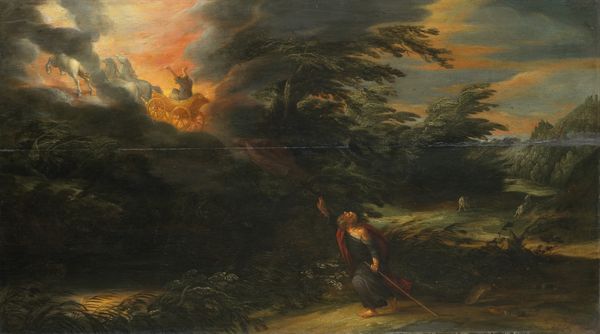
oil-paint
#
baroque
#
oil-paint
#
figuration
#
oil painting
#
chiaroscuro
#
history-painting
#
angel
#
christ
Dimensions: 24 1/8 × 19 1/8 in. (61.3 × 48.6 cm)
Copyright: Public Domain
Curator: This is Nicolas Poussin’s “The Agony in the Garden,” an oil on canvas, which he painted between 1626 and 1627. It's currently part of the Metropolitan Museum of Art's collection. Editor: It’s so murky! I mean that literally, the earth tones are overwhelming, casting almost everything in shadow. You can barely discern the figures from the landscape. Curator: The tonality is undoubtedly subdued, but I think that enhances the formal tension within the composition. Note how Poussin positions the figures along distinct horizontal planes. The sleeping disciples, the kneeling Christ, and the ethereal realm above create a structured hierarchy. Editor: A hierarchy established within a clear socio-political context. These aren’t just sleepers; they’re figures of indifference in the face of suffering. Their slumber underscores a lack of solidarity with Christ’s very human agony, brought on, of course, by looming imperial violence. Curator: Perhaps, but I see the figures more as compositional devices, anchoring the scene and drawing the eye towards the more active elements, like the angel. Poussin employs a distinct color palette here; the stark contrast between the angel’s luminous presence and the surrounding darkness… Editor: Yes, and how does that angelic intervention offer genuine solace? Look at the angel's gesture! It's restraining, even controlling. The whole scene reads like the imposition of divine will, a kind of resigned acceptance rather than a moment of true comfort or choice for the protagonist. There is such passivity here, in all the figures. Curator: Isn't that a defining element of Baroque painting? Poussin is portraying a divine inevitability. Look at the dynamism inherent in the drapery! The arrangement leads the viewer through a cascading series of aesthetic pleasures. It shows masterful technical skill in both its restraint and inherent grandeur. Editor: I disagree about "pleasure," as this restraint reflects broader societal pressures, demanding subservience in the face of powerful forces. The heavy use of chiaroscuro is as much about obscuring context as revealing it. Curator: A very valid point. But I still maintain there's great mastery. Looking closely, Poussin really achieves something unique in its arrangement. Editor: Absolutely. He distills the weight of such oppressive cultural burdens so effectively.
Comments
No comments
Be the first to comment and join the conversation on the ultimate creative platform.
